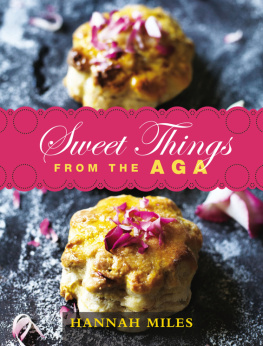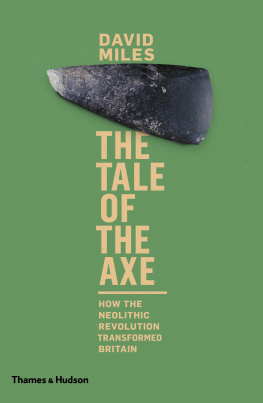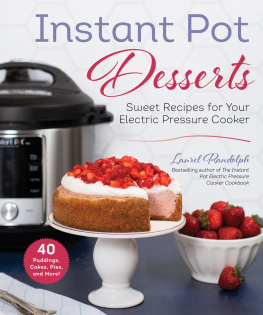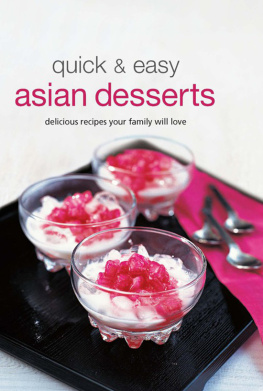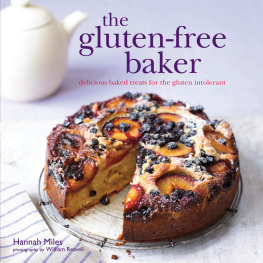
W hen I moved into my cottage eight years ago and was confronted by a cream-coloured Aga nestling in the kitchen, a friend told me that once I had cooked on an Aga I wouldnt be able to live without it.
At the time, I wasnt convinced; after all, it was just another type of oven, wasnt it? How wrong I was! Eight years later, the Aga is very much the centre of my home: it dries the washing; my cats, Muffy and Peapod, lie curled up in front of it to get warm; it dries wellington boots after long country walks; and most of all, it cooks delicious food. Over the last few years I have cooked on several different Agas, and no two are the same. My own Aga (which is fairly old) can be somewhat temperamental it doesnt like windy weather and the hot spots can vary from day to day but I love it all the same. Cooking with an Aga is much less about cooking by temperature and timing and more about cooking by sight, feel and instinct. Although this may seem daunting initially, with a little practice you will learn how your Aga works.
The Aga has no air circulation inside. The upside to this is that you can cook a curry and a cake in the oven at the same time and the flavour of the spices wont transfer to the cake. The downside is that you cant smell anything outside the oven; and like many other Aga owners, Im sure, I have occasionally left something in the Aga and completely forgotten about it, only to find the charred remains a few hours later. I solve this problem by using a kitchen timer on a ribbon around my neck so that I dont forget that there is something cooking!
At the time when I appeared on MasterChef, a few years ago, my Aga was my only cooker at home, and I found it very hard cooking in a regular oven again. The dishes I love to cook are mainly cooked very slowly in the Simmering Oven, and trying to do these in a one-hour time slot on the programme was very difficult. I remember judge John Torode shouting at me one day that I needed to stop cooking in a regular oven as if it were an Aga. You can take the girl away from the Aga but you cant take the Aga instinct out of the girl!
I always feel so sad in the summer when it is too hot to keep the Aga turned on (my bed is directly above the Aga perfect in winter but not ideal when it is hot outside). Somehow the kitchen doesnt feel the same when it is off; the kitchen floor isnt warm and washing doesnt dry! For me, one of the best things about the Aga is that it is always ready to cook there is no need to preheat the ovens and it makes a lot of cooking processes, such as proving dough and melting chocolate, so much easier.
If you havent gathered it already, I love my Aga. The recipes in this book are things that I like baking most in it and I hope you enjoy them too.
Hannah x
T YPES OF AGA
There are several different types of Aga. The first difference between them is fuel: they can be powered by oil, gas, solid fuel or electricity. However, the general cooking principles of the Aga are the same, no matter how it is fuelled (although with some of the modern electric ovens you have the luxury of being able to vary the temperature). Each has a heat source in the bottom which heats the Agas ovens to differing temperatures, depending on their location. The other main difference is the number of ovens an Aga contains. Until recently there were three basic models, containing 2 ovens, 3 ovens and 4 ovens. Now Aga has just released a brandnew 5-oven Aga. I must confess to being slightly covetous of this new model, but my 2-oven Aga copes fine with the large amount of cooking I do.
2-oven Aga
This model is relatively small and compact, and although it has less total oven space than the larger models, it is perfect for everyday family cooking. I have even managed to cook harvest supper for 80 people on my 2-oven Aga. In a 2-oven Aga, the top oven is the Roasting Oven, which Aga say should generally be around 240C (+/- 10) and which is perfect for roasting meats and vegetables, starting casseroles and other one-pot dishes, and cooking Yorkshire puddings. By inserting a cold plain shelf (see ) into the Roasting Oven, you can reduce the temperature below the shelf to about 180/190C, making it suitable for baking cakes and pastries, which require a more gentle heat. The floor of the Roasting Oven is perfect for baking pizzas and boiling jams and chutneys.
The lower oven on a 2-oven Aga is the Simmering Oven, which has a low temperature (Aga say this should be about 120C (+/- 10)). It is ideal for slow-cooking casseroles and for making porridge overnight and is the perfect temperature for meringues and pavlovas. Food does continue to cook in this oven, albeit slowly, so you need to take this into account if you transfer cooked food to the Simmering Oven to keep it warm.
On top of this Aga are two hotplates: a Boiling Plate (perfect for kettles and for boiling vegetables and other things that need rapid boiling) and a Simmering Plate, which is cooler and perfect for cooking pancakes and crumpets. You can fit several pans on to each plate, which is ideal when you have lots of things to cook.
3-oven Aga
In addition to the Roasting Oven and Simmering Oven, this model includes a Baking Oven, which has a temperature of 180C (375F) and is ideal for cooking cakes and biscuits and dishes that need a moderate temperature. The top includes the same hotplates as on a 2-oven Aga.
4-oven Aga
The fourth oven in this model is a Warming Oven, which is ideal for keeping food warm and for warming plates and serving dishes before meals. The top of this Aga also has a Warming Plate, perfect for keeping food and mugs of tea and coffee warm.
5-oven Aga
This model has the same ovens and hotplates as the 4-oven Aga, plus a Slow Cooking Oven, ideal for slow-cooked meats, casseroles, and stews and offering plenty of cooking space for large-scale entertaining.
C OOKING TECHNIQUES
The key principles when cooking in an Aga are to keep checking what you are cooking and to control the temperature using cold shelves (see ) if your dish is cooking too quickly. Unlike a conventional oven, the temperature in the Aga will not drop noticeably when you open the Aga door and therefore you dont risk having a sponge cake, for example, sink if you open the door. If a cake or dish is browning too quickly, either place a cold shelf on top or transfer the food to a cooler oven and cook it for a longer period of time.
The actual cooking time will depend on how hot your Aga is. My Agas Roasting Oven ranges generally between 230C and 240C. I find an oven thermometer (which is inexpensive) very useful for checking the actual temperature of the oven.
With my Aga, the side of the dish or pan nearest the burner is hotter than the other side. Therefore one side of my cake or dessert generally cooks more quickly than the other. In order to ensure even cooking, I turn my trays halfway through cooking, and you may find this useful if your Aga is similar to mine.
Always check that the item is cooked properly before removing it from the oven, even if the cooking time stated in the recipe has elapsed. Biscuits should be quite soft to the touch, as they will set once cool. Cakes should spring back when pressed with a clean finger. You can also insert a sharp knife or skewer into the centre of a cake to test if it is done. If it comes out clean with no cake batter on it, the cake is ready. If there is still some sticky cake batter visible, the cake requires a little more cooking. The cooking times given in the recipes in this book are guidelines only; the actual cooking times will depend on the temperature of your Aga.
Next page
